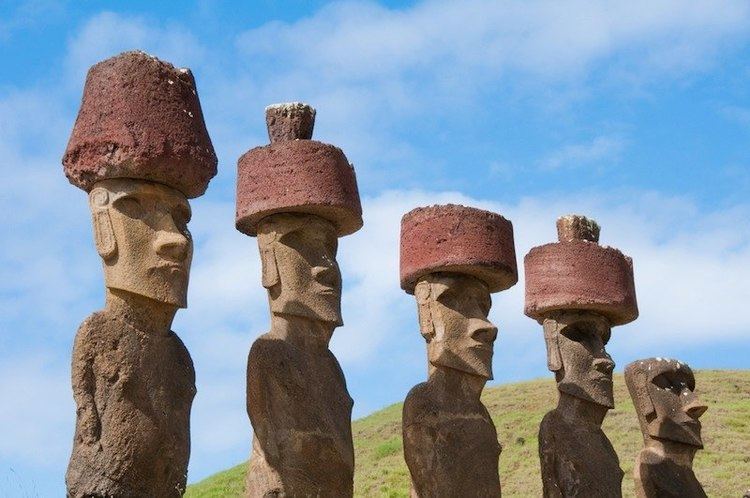 | ||
Similar Puna Pau, Rano Raraku, Ahu Akivi, Ahu Tongariki, Anakena | ||
Pukao are the hat-like structures or topknots formerly placed on top of some moai statues on Easter Island. They were all carved from a very light red volcanic stone scoria, which was quarried from a single source at Puna Pau.
Contents
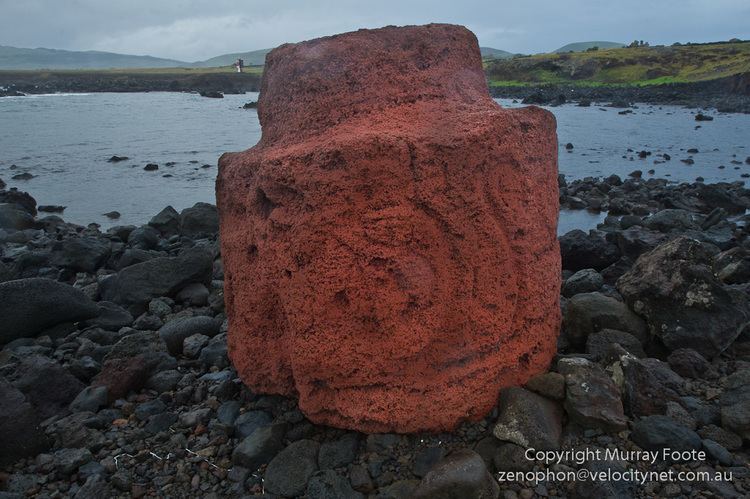
Pukao ekran na s7
Symbolism
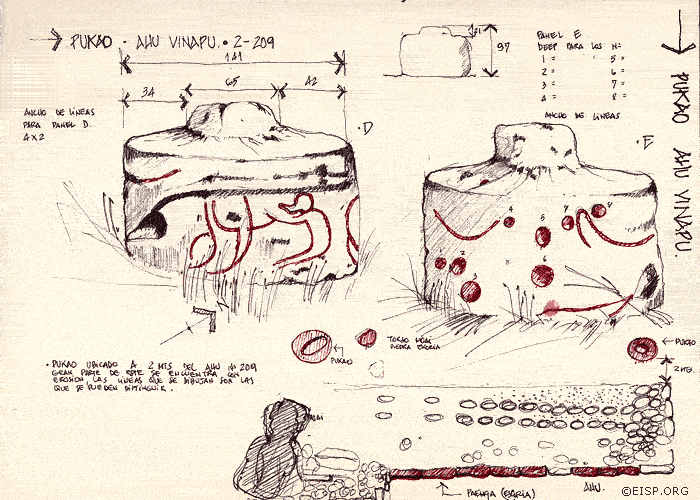
Pukao were not made until the 15th - 16th centuries and are later additions to the moai. The reason that pukao were made is not known though some theories exist. One such theory suggests that the placement of a pukao on top of the moai statue was an expression of power by the islanders. This has credibility because such a task at the time, and even now, was extremely difficult, especially as no evidence of crane technology existing at the time has been found. There are other theories which suggest that the pukao serve as distinction between statues. Those moai with pukao are meant to be shown as more majestic and important. This distinction may have also directed islanders on which statues to perform various rituals at and which ones not to. Pukao are now believed to represent hair as it was custom for high ranking men to have long hair tied in bun on the top of their heads. In addition, some researchers associate the red color of pukao to be an indicator that they were important for ritual ceremonies.
Construction
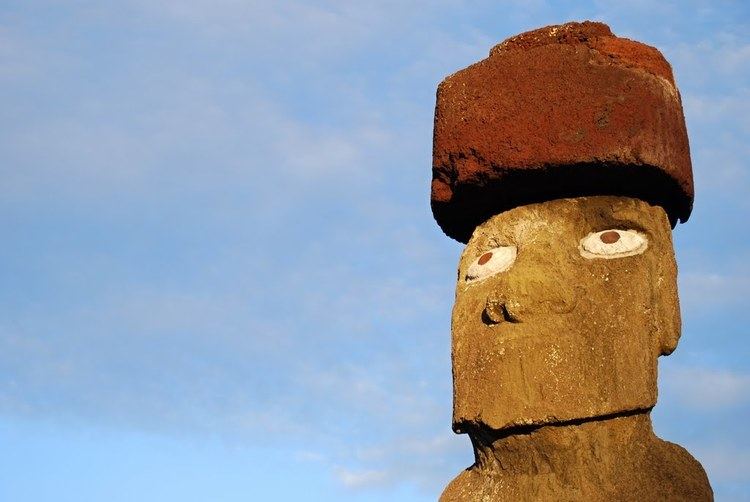
Pukao are cylindrical in shape with a dent on the underside to fit on the head of the moai and a boss or knot on top. They fit onto the moai in such a way that the pukao protrudes forwards. Their size varies in proportion to the moai they were on but they can be from 6 feet (1.8 m) in diameter up to 10 feet (3.0 m) in diameter. Pukao weigh up to 11 tons and the moai statue along with a pukao structure on top raised the statue to an average of 37 ft.
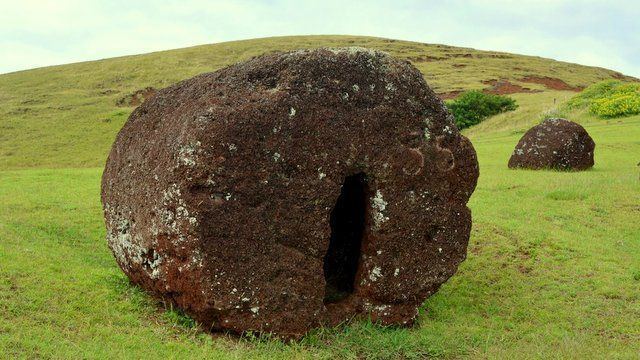
The pukao was balanced as a separate piece on top of the head of a moai. They are believed to have been raised using ramps possibly requiring only several people. The ring-like indentations along the bottom and edges of the pukao support this theory as they postulate a ramp made out of logs being used to roll the pukao to the tops of moai statues. In addition, various physicists have made models indicating this as a possibility, and given the oblong shape of pukao, the structures would have been easier to roll up the statue than roll back down. However, no one theory can be accepted as true as virtually any theorized method (such as the use of pulleys) is plausible.
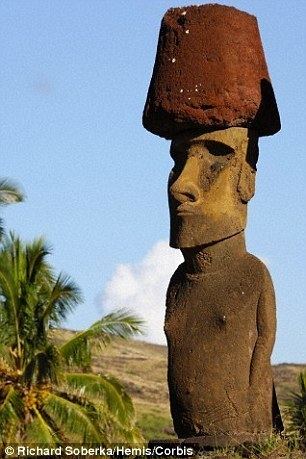
To date, about 100 pukao have been documented archaeologically, but only at Ahu with fallen statues or at the source quarry.
Source of the Pukao
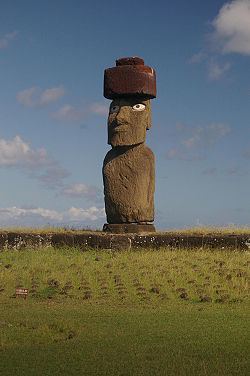
The red-colored hats were made from reddish scoria, a volcanic rock. The rocks were built in a quarry known as Puna Pau, which was located inside the crater of a volcano with the same name, and on its outer lip. After the Pukao were made, they were rolled by hand or on tree logs to the site of the statues along an ancient road. The road was built out of a cement of compressed red scoria dust. Over 70 discarded Pukao have been found along the road and on raised ceremonial platforms. The indents found on the bottom of pukao that reached the statutes are not present in those strewn along the path from Puna Pau to the moai hinting that basic quarrying was done at Puna Pau, as well as moulding stone into a cylindrical shape easier to transport. Meanwhile, more intricate carvings were made on site of the moai statues immediately prior to the placement of pukao on the moai statues.
